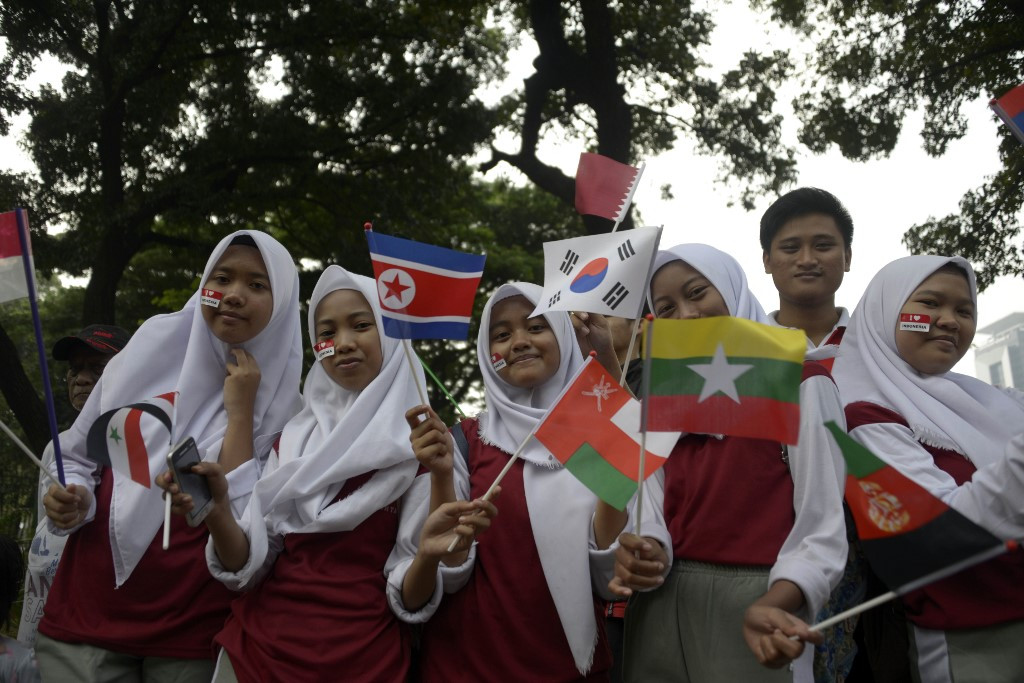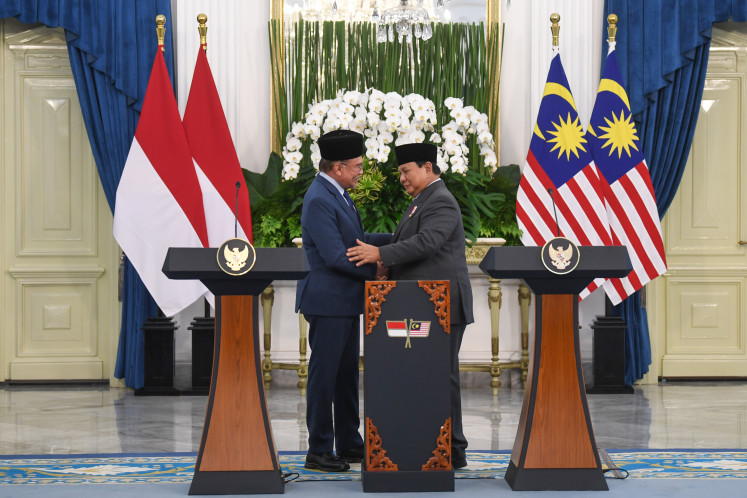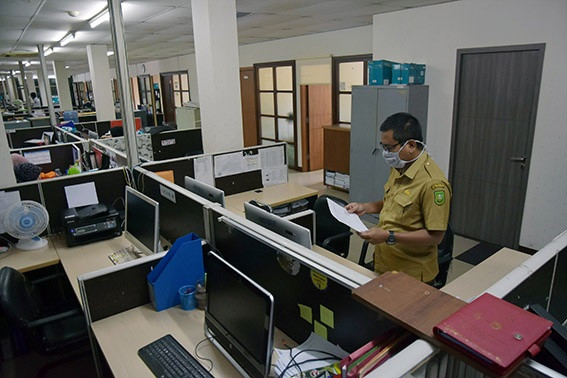Popular Reads
Top Results
Can't find what you're looking for?
View all search resultsPopular Reads
Top Results
Can't find what you're looking for?
View all search resultsThe deadly, intimidating school uniform
This exchange shows that inappropriate policies on religious attire create serious problems for this pluralistic nation: social segregation, intimidation and discrimination against children, even the death of children.
Change text size
Gift Premium Articles
to Anyone

L
ast year, 10 female students died during their school’s mandatory scout activity. They were among the nearly 250 students who were swept away by a flash flood while trekking along Sempor River in Yogyakarta. The students who were killed were all wearing long skirts as part of the scout uniform for Muslims. Wahyu Efendi L., the Yogyakarta head of the National Search and Rescue Agency (Basarnas), attributed the uniform for making the girls especially prone to being dragged away by the strong flood current.
However, the accident was deemed a case of regulatory noncompliance. The National Scout Movement regulation on boy and girl scout uniforms prescribes two types of uniforms for veiled Muslim students: a “daily” uniform with a long skirt and a field uniform with trousers.
Still, why not have just one uniform for female scouts instead of two? What is the point of wearing a long skirt for daily scout activities? Do daily scout activities not include physical and outdoor activities? What is the point of the scouts if it doesn’t involve physical and outdoor activities? And the most important question: Why should a faith-based uniform neglect the wearer’s safety?
Since the implementation of regional autonomy in 2001, controversy has been rife over the practice at many public schools that enforces or prohibits religious attire, especially the hijab. Muslim female students encountered hijab bans in predominantly non-Muslim regions (such as cases in Denpasar in 2014, Maumere in 2017, Merauke in 2018), while cases of compulsory hijab were found in Muslim-majority provinces (West Sumatra, Riau, West Java).
While the cases of hijab bans were resolved in a matter of days following media reports with the schools allowing Muslim students to wear a hijab, it took two decades to end the compulsory hijab dress code non-Muslim female students faced in many parts of the country.
In most cases, the solution to the compulsory hijab rule was unfair to non-Muslim female students, meaning that they either had to take it or leave it.
Between 2001 and 2007, nine out of 19 regional governments in West Sumatra imposed a compulsory hijab regulation for all female students. On paper, this sharia-inspired bylaw applies only to Muslim students, but in reality, many public schools implemented the rule indiscriminately, as reported by studies published in Journal Religio (2017), Journal Perempuan (2008) and Tempo Magazine (2005 and 2008).
Similar to these report, a Christian Batak woman shared with me her concern over an experience she had in 2013, when she tried to enroll her daughter at a public elementary school in Padang and the principal told her that her daughter had to wear a hijab uniform. She withdrew her daughter’s admissions application.
Because of the policy, she instead sent her three children to a private Christian school. She was disappointed that the school uniform policy had deprived her children of a chance to study at the top public schools in Padang, although their academic achievements qualified their admission.
Public schools belong to the state and are therefore open to children from diverse backgrounds, whether ethnic, religious or socioeconomic. Respecting diversity is one of the most important aims of public schools, but faith-based school uniforms prevent children from experiencing social assimilation at early age. The hijab requirement simply denies children from minority religions (and ethnic groups) access to public schools.
This kind of social segregation has been occurring in many parts of the country over the last two decades. A recent study by Human Rights Watch reveals that schools in more than 20 provinces have maintained religious dress codes.
Children of minority religions from low-income families have no choice but to follow their school’s religious dress code, because their parents cannot afford to send them to a private school. This has created a phenomenon called “part-time Muslims”, referring to non-Muslim female students who are forced to wear a hijab uniform at school.
School administrators claim that the students wear the hijab voluntarily and are comfortable with it, but a 2017 study published in Journal Religio by Andri Ashadi, a lecturer at a State Islamic University (UIN) in Padang, found that non-Muslim students at two public high schools in the West Sumatra capital were denied freedom of expression. Rather, the schools’ principals stressed that the percentage of non-Muslim students in the student body was negligible and, as part of the minority, the students should hence follow the school regulation; a regulation that is only appropriate for Muslim students.
This exchange shows that inappropriate policies on religious attire create serious problems for this pluralistic nation: social segregation, intimidation and discrimination against children, even the death of children.
It is hoped that the recent joint ministerial decree signed by Education and Culture Minister Nadiem Makarim, Home Minister Tito Karnavian and Religious Affairs Minister Yaqut Cholil Qoumas will help the nation solve those problems. The joint decree, issued following public furor over a compulsory hijab rule at a public school in Padang, prohibits both imposing and banning religious attire at public schools.
According to Nadiem, wearing religious attire is an individual right, and not something for a school to decide.
Yet, former education minister Muhammad Nuh believes the religious school uniform issue is too localized and minor for regulating under a joint ministerial decree. He has also castigated Nadiem as “menteri kurang kerjaan”, a minister with not enough to do. As a representative of the previous regime, Nuh’s remarks only serve to explain why the issue has lasted 20 years.
The joint decree deserves applause. After six years of passivity, the Jokowi administration has finally stood up to intolerance and repression of minority groups.
The decree has its pros and cons, but Nadiem must reach out to schools and other education stakeholders to disseminate the government policy and prevent them from becoming prey to hoaxes and misinformation.
The decree stands a great chance of righting the acute and widespread practices of intolerance and disrespect for the plurality of Indonesia’s social fabric. It is encouraging that this endeavor starts from the most important space: public schools.
***
The writer is a lecturer, IPB University. The views are personal.









